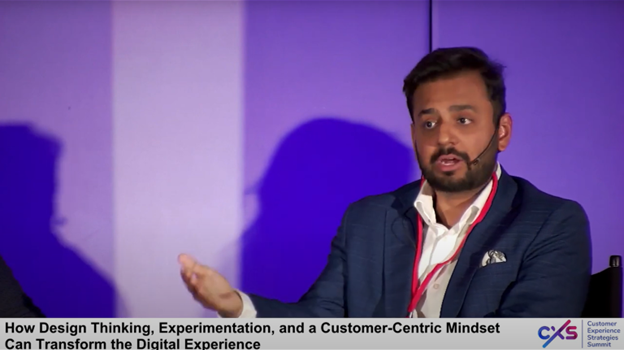Executive Summary:
In an era of rapid digital transformation, organizations must reimagine their approach to customer experience (CX). This whitepaper explores a comprehensive framework for building adaptive, customer-centric organizations that drive meaningful business impact.
Introduction:
In the rapidly evolving landscape of business transformation, customer experience (CX) has emerged as the critical differentiator between market leaders and followers. This whitepaper represents a pivotal exploration into the science of experience—a holistic approach that transcends traditional operational boundaries and reimagines how organizations create, measure, and deliver exceptional customer interactions. By bridging the gap between creative vision and strategic execution, we unveil a comprehensive framework that empowers businesses to transform customer experience from a cost center to a strategic growth engine.
Section 1: The Evolving CX Landscape
The customer experience landscape is undergoing a seismic shift. Traditional metrics and siloed approaches are rapidly becoming obsolete in a world where customer expectations are increasingly sophisticated, dynamic, and interconnected. This section explores the fundamental transformation occurring in how organizations perceive, design, and deliver customer experiences, revealing the critical drivers of innovation and competitive advantage.
– Shifting from Operational Metrics to Experience Intelligence
– The Limitations of Traditional CX Approaches
– Emerging Trends in Customer Experience
Key Insights:
– 72% of businesses report improved customer retention through strategic CX initiatives
– Cross-functional CX teams demonstrate 35% higher innovation potential
– Experience-driven businesses see 1.6x higher customer satisfaction rates
Section 2: Theoretical Framework – The Science of Experience
At the heart of exceptional customer experience lies a robust theoretical framework that combines human-centered design, data intelligence, and strategic thinking. This section deconstructs the complex ecosystem of experience design, presenting a comprehensive model that integrates psychological insights, technological capabilities, and organizational strategy into a cohesive approach to understanding and creating remarkable customer journeys.
Pillars of Experience Design:
1. Holistic Journey Mapping
2. Integrated Data Strategies
3. Cross-Functional Collaboration
4. Continuous Improvement Model
Methodology:
– Design Strategy Approach
– Qualitative and Quantitative Integration
– Journey-Centric Thinking
Section 3: Cross-Functional CX Strategy
Organizational silos are the silent killers of customer experience excellence. This section provides a revolutionary blueprint for breaking down departmental barriers, creating collaborative ecosystems, and developing a unified approach to customer experience that transcends traditional organizational boundaries. By reimagining internal collaboration, businesses can unlock unprecedented levels of innovation and customer-centricity.
Strategic Components:
– Developing Shared Language
– Creating Collaborative Ecosystems
– Breaking Down Organizational Silos
Implementation Framework:
– Stakeholder Mapping
– Internal Persona Development
– Collaborative Governance Models
Section 4: Data-Driven Experience Design
Data is the new currency of customer experience. However, not all data is created equal. This section explores the critical distinction between experience data (X-Data) and operational data (O-Data), presenting advanced strategies for collecting, integrating, and leveraging comprehensive insights that transform raw information into actionable intelligence driving meaningful customer interactions.
Experience Data (X-Data) vs. Operational Data (O-Data):
– Comprehensive Measurement Approaches
– Metrics Beyond NPS and CSAT
– Telemetry and Journey-Specific Insights
Data Integration Strategies:
– Qualitative and Quantitative Fusion
– Advanced Visualization Techniques
– Predictive Experience Modeling
Section 5: Practical Implementation Strategies
Theoretical frameworks are only valuable when translated into practical, executable strategies. This section provides a comprehensive roadmap for organizations seeking to transform their customer experience capabilities, offering a step-by-step guide to building cross-functional teams, developing collaborative technologies, and creating a culture of continuous improvement and customer-centricity.
10-Point Implementation Roadmap:
1. Establish Cross-Functional Core Teams
2. Develop Shared Experience Language
3. Create Collaborative Technology Platforms
4. Implement Agile Experience Management
5. Build Data Visualization Capabilities
6. Develop Continuous Learning Programs
7. Design Horizontal Collaboration Protocols
8. Create Enabling Function Mindset
9. Establish Journey-Specific Metrics
10. Foster Continuous Improvement Culture
Section 6: Case Studies
Case Study 1: Financial Services Transformation
Northwestern Mutual Claims Experience Redesign
Key Outcomes:
* 40% reduction in process complexity
* Improved customer satisfaction
* Enhanced advisor effectiveness
Case Study 2: Digital Process Modernization
Paperless Transformation Approach
Key Outcomes:
* Simplified customer interactions
* Reduced operational overhead
* Increased digital adoption
Section 7: Recommendations and Future Outlook
Strategic Recommendations:
– Invest in Cross-Functional CX Capabilities
– Develop Adaptive Experience Design Skills
– Create Collaborative Technology Ecosystems
Future Trends:
– AI-Powered Experience Intelligence
– Hyper-Personalization
– Predictive Customer Journey Mapping
Conclusion:
The future of customer experience lies in breaking down organizational barriers, integrating comprehensive data strategies, and creating adaptive, human-centric approaches.
This whitepaper is based on industry research and expert insights from the CXS Summit Session featuring Karan Thacker and Lauren Jensen.





